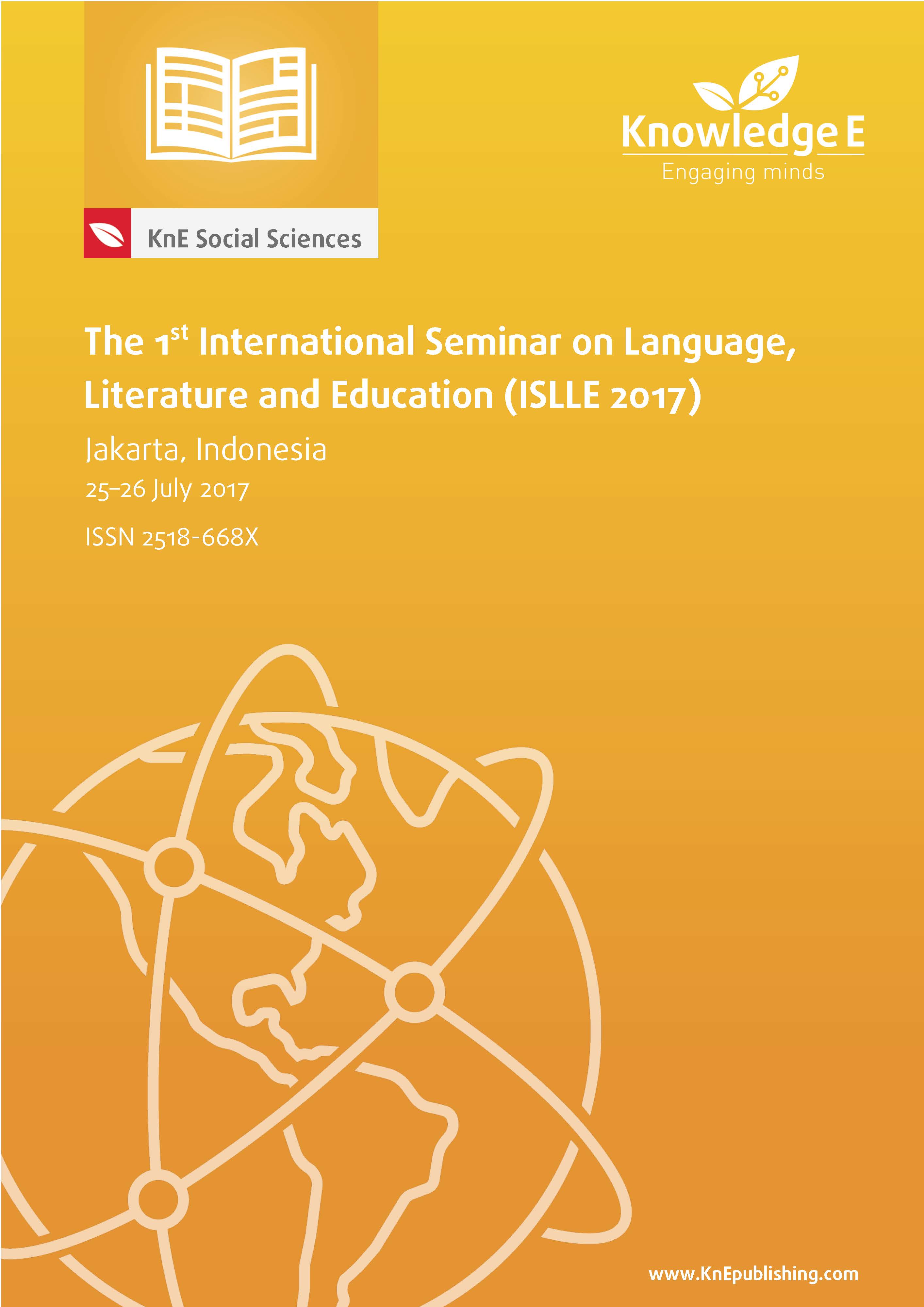Teaching and Learning of Indonesian by Constructivism Model with Inquiry Approach
DOI:
https://doi.org/10.18502/kss.v3i9.2740Abstract
The aim of this study was to examine (1) students’ misconceptions about object and complement, (2) the effectiveness of a conception modification strategy, (3) students’ mastery of concepts of object and complement, and (4) students’ comments about a constructivism model with an inquiry approach in learning concepts of object and complement. The study subjects consisted of teachers and students from class VII at Junior High School (SMPN) 3 Singaraja. The data were analyzed descriptively and via a t-test. The results demonstrated that the students who were taught using a constructivism model with an inquiry approach learned the concepts of object and complement better than those who were taught using a conventional model.
Keywords: constructivism, inquiry, object
References
Ministry of Education: Kurikulum 2006. Jakarta: Ministry of Education; 2006.
Putrayasa IB: Penerapan Model Konstruktivisme Berpendekatan Inkuiri dalam Pembelajaran Bahasa Indonesia. Jurnal Pendidikan dan Pengajaran UNDIKSHA. 2010; 43(1): 36-46.
Wahab A: Improving Learning through Strengthening the Organizational Culture of the Academic Colleges as a Key into the Third Millennium. (Scientific Oration). Presented in Order Anniversary and Graduation STKIP Pasundan Cimahi; 2000.
Bodner GM: Constructivism: A Theory of Knowledge. Journal of Chemical Education. 1986; 63(10): 873-878.
Putrayasa IB: Penelusuran Miskonsepsi dalam Pembelajaran Tata Kalimat dengan Pendekatan Konstruktivisme Berbasis Inkuiri pada Siswa Kelas 1 SMP Laboratorium UNDIKSHA Singaraja. Jurnal Pendidikan Indonesia. 2013; 2(2): 236-243).
Hasan SH: Pendidikan Ilmu-ilmu Sosial. Bandung: Rineka Cipta; 1996.
Fosnot CT: Equiring Teachers Equiring Learners: A Constructivist Approach to Teaching. New York: Teachers College Press; 1989.
Shymansky JA, Keyle WC: Establishing a Research Agenda: Critical Issues of Science Curriculum Reform. Journal of Research in Science Teaching. 1992; 29(8): 749-778.
Tasker R: Effective Teaching: What Can a Constructivist View of Learning Offer? The Australian Science Teachers Journal. 1992; 38(1). 25-34.
Sukadi: Praktik Belajar Kewarganegaraan Berbasis Kebijakan Publik dan Peningkatan Kecakapan Kewarganegaraan Mahasiswa. Jurnal Pendidikan dan Pengajaran UNDIKSHA. 1999; 40(5): 737-757.
Sadia IW: Pengembangan Model Mengajar Konstruktivisme dalam Pembelajaran IPA di SMP (Suatu Studi Eksperimental Pembelajaran Konsep Energi, Usaha, danSuhu di SMP Negeri Singaraja). Doctoral Dissertation. PPS Teachers’ Training College Bandung; 1996.
Sund RB, Trowbridge LW: Teaching science by inquiry in the secondary school. Ohio: Charles E. Merrill Publishing Company; 1973.
Eltinge EM: Linguistic Content Analysis: A Method to Measure Science as Inquiry in Textbooks. Journal of Research in Science Teaching. 1993; 30(1): 65-83.
Kuslan L, Stone AH: Teaching Children Science: An Inquiry Approaches. California: Wadsworth Publishing Company, Inc; 1969.
Bruce WC, Bruce JK: Teaching with the inquiry. Maryland: Alpha Publishing Company, Inc; 1992.
Cleaf DWV: Action in Elementary Social Studies. Singapore: Allyn and Bacon. 1991.
Murray T, Winship L, Woolf B, Bruno M, Stillings N: Two Approaches to Supporting Scientific Inquiry Skills in Post-Secondary Education: Simulation-Based Inquiry and Coached Hypothesis Investigation. Poster Presentation for AACU 2003 – Technology, Learning, and Intellectual Development Conference; 2003.
Suparno P: Miskonsepsi & Perubahan Konsep dalam Pendidikan Fisika. Jakarta: PT Gramedia; 2005.
Cook WA: Introduction to Tagmemic Analysis. New York: Holt, Rinehart, and Winston; 1971.
Elson BF, Pickett V: An Introduction to Morphology and Syntax. California: Summer Institute of Linguistics; 1969.

